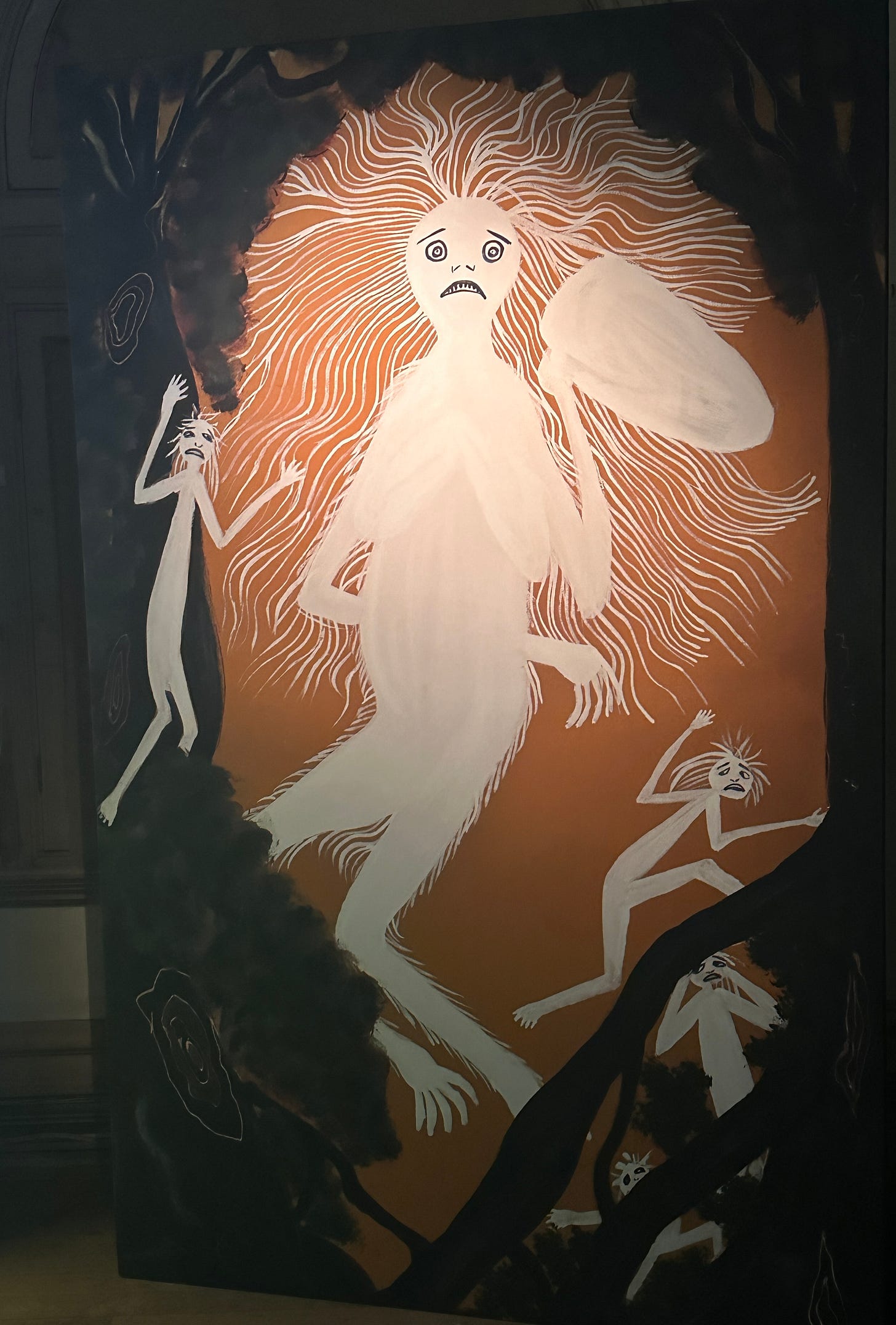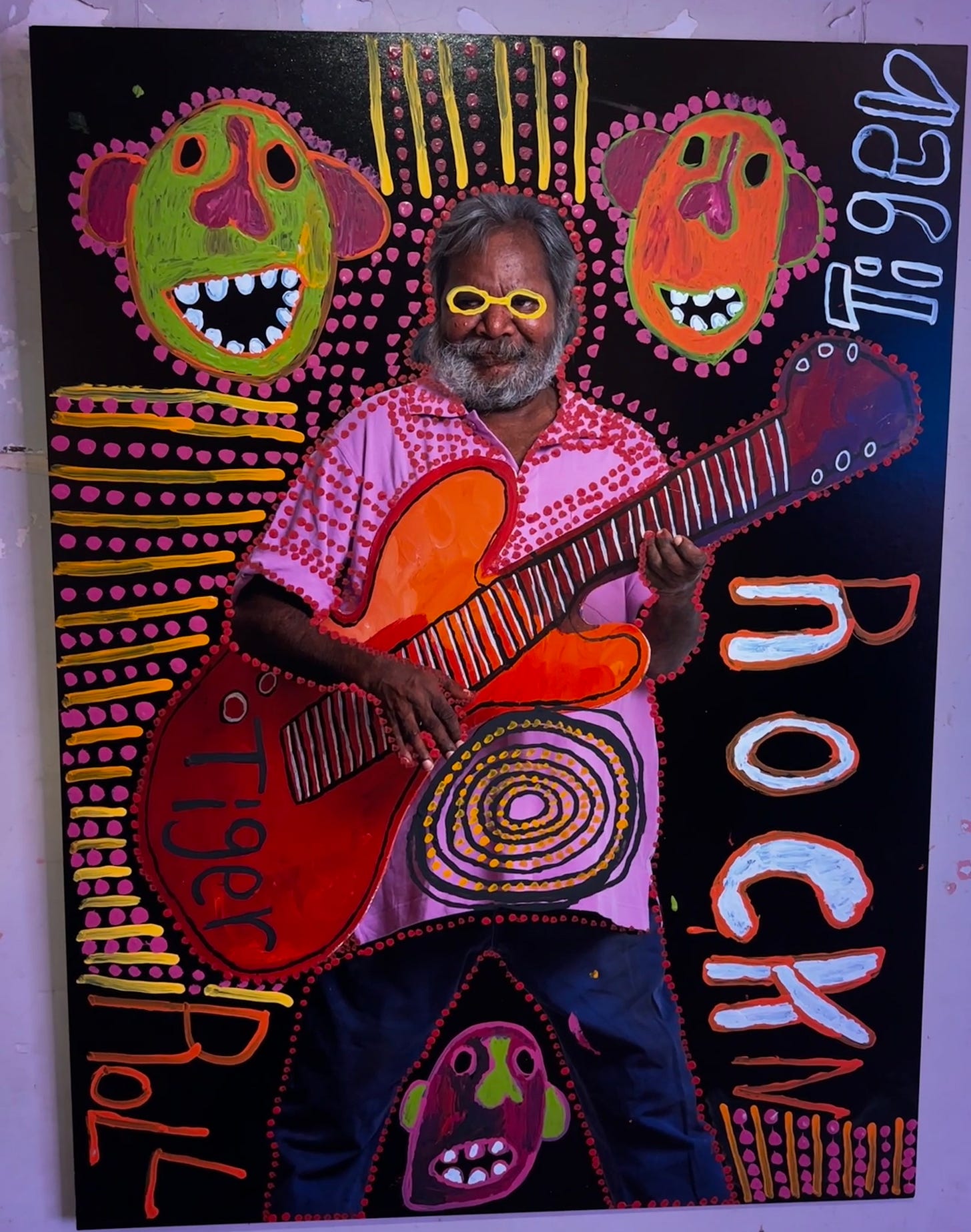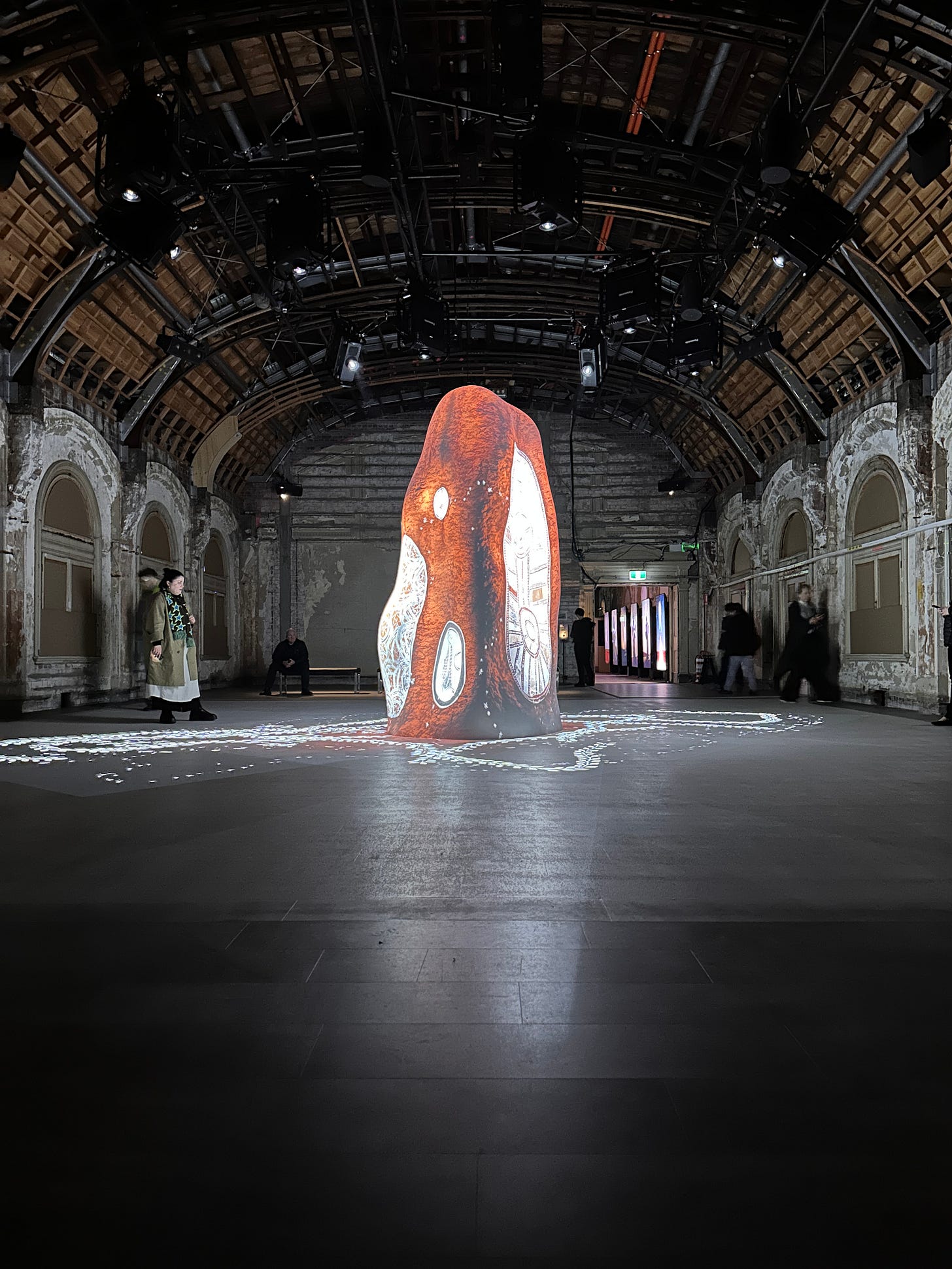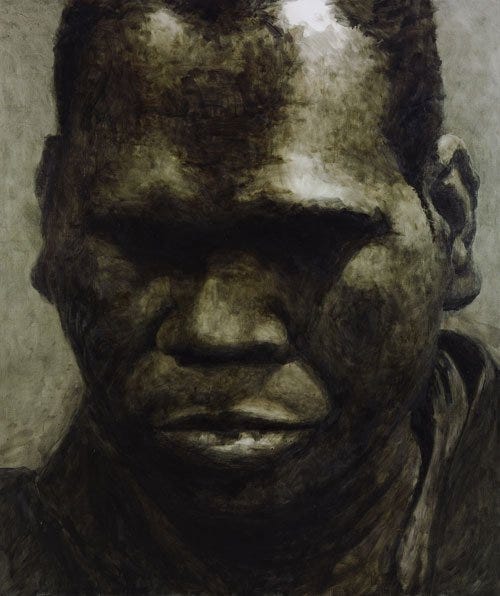First Nation Wednesday
Spirit Shadow and Bungul
The Rising Arts Festival in Melbourne has been an intriguing mix of art. Music, theatre, dance, exhibitions, and the like have been dotted around town.
The top floor of Flinders Street Station has been transformed into an exhibition called Shadow Spirit. The worlds that are imagined and displayed here move from the desert to rock and roll but they all move with the spirit of this land.
There were spaces that made me cry and others that made me feel grounded in the land that I live in. These rooms and this art makes you feel deeply and will leave you thinking about your connection to the land and spirit.
Rene Wanuny Kulitja, a Pitjantjatara woman, has a room that deals with Tiirtjingalpai – practicing care for the spirits of the dead.
I was in this room 3 times during my visit and each time I felt a calmness and connection to the spirit of the work.
I won’t go through each piece because you can read about it on the website. But I highly recommend you spend time reading about the work after your experience.
Please go to this exhibition as it is only on until the 30th of July.
https://shadow-spirit.rising.melbourne/
In the ballroom is The Mulka Project piece that mesmerized me and moved my soul. I sat and stood and took it in from many angles.
From the Rising website:
The Mulka Project was established in 2007 at the Buku-Larrŋgay Mulka Art Centre, Yirrkala Live and work at Buku-Larrŋgay Mulka Art Centre, Yirrkala; North East Arnhem Land, Australia; and throughout the world. The Mulka Project is a collective of practicing multimedia artists, cinematographers, sound engineers, and post-production technicians based in Yirrkala, North East Arnhem Land. The name Mulka means a sacred but public ceremony, and, to hold or protect.
It is Mulka’s mission to sustain and protect Yolŋu cultural knowledge whilst being managed by Yolŋu law and governance. At the core of The Mulka Project resides a growing, living archive of Yolŋu knowledge, ceremony, and cultural history which gives voice to generations past and also allows contemporary Yolŋu knowledge and law to speak to coming generations and a worldwide audience.
Synchronicity amazes me even though it seems to happen to me all the time. Fun fact, it happens to all of us all the time, you just have to dial up your awareness a bit to ensure you catch it.
When I arrived at Flinders Station, I ran into a number of people I have become acquainted with from Initiatives Of Change. I keep bumping into them at First Nation events around town and I hope to spend some more time with their events. This was a posse of about 11 people it was nice to have some smiling faces to share the art with.
Bungul at Hamer Hall was the second part of this evening. In Yolngu, a buŋgul is a ceremony, a gathering ground: a meeting place of dance, song, and ritual. The ceremony tonight was a celebration of the inspiration of the music recorded and written for Dr. G. Yunupiŋu’s posthumously released album, Djarimirri (Child of the Rainbow).
The spirit and presence of Gurrumul was in the concert hall. The Yolngu dancers and singers combined with a stellar performance by the Melbourne Symphony Orchestra. Time stood still and time passed so quickly. Time was unimportant.
Stories are so important. You can listen to these stories here on the playlist which is simply the posthumous album left to us after the passing of Dr. G.
And the chance meeting of Gurrumul’s guitarist, Francis Diatschenko, the other evening at Treaty Day Out, seems to fit in well with the theme of synchronicity.
Enjoy the flow because there always is.
Over the past few years, my connection to my country and my place here geographically seems to be more solidified. That may seem like an odd thing to say for someone who has been here for 39 years, but it is not simply about standing on the ground.
It is much more about truly living with this country in a way that I have been unable to do in the past.
My respect for all it gives us and represents and the spirit within each grain of sand is immense.
Mägaya







